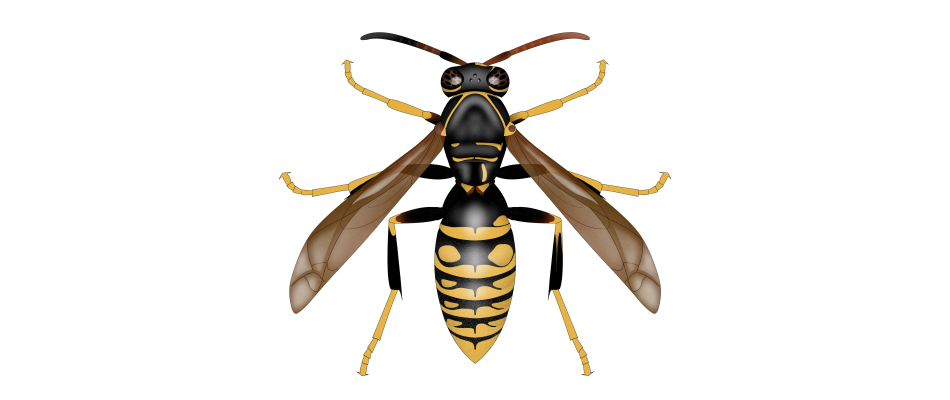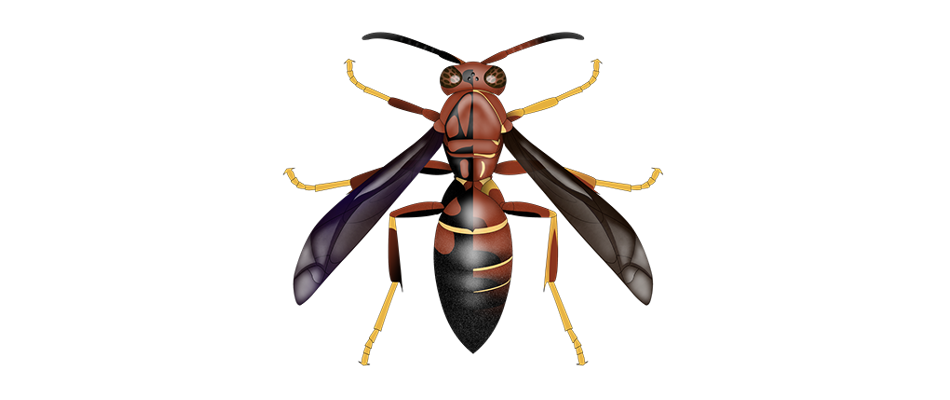Understanding Hypervariable Polistes: A NEW CITIZEN SCIENCE INITIATIVE
EDIT: A new project update is available here.
Hello all!
As many of you know, I am currently working on the second edition of my field guide to social wasps. I want to make all of the information it contains as accurate as possible, so I am delving back through iNaturalist data to better understand the biogeography of various color forms of the most hypervariable Polistes species in North America: fuscatus, aurifer, and dorsalis.
To that end, I've created 22 individual iNaturalist projects to sort observations of each color form. I would LOVE to have additional help with this research, so if anyone is interested in sorting iNat observations, all of the relevant links are below. The results of this initiative will be tremendously helpful to my own research (and likely helpful to other Vespid researchers as well!). Please feel free to share this with your friends!
Click here to view all observations of Polistes fuscatus that have not been identified to color form.
Click here to view all observations of Polistes aurifer that have not been identified to color form.
Click here to view all observations of Polistes dorsalis that have not been identified to color form (or to subspecies, in the case of P. d. dorsalis).
Explanation of Color Forms (and links to projects):
FORM DEFINITIONS MAY CHANGE AS THE INITIATIVE PROGRESSES.

Polistes aurifer - "Gilded" Form
- Thick yellow lines or splotches on the scutum (or yellow lines that connect in the middle)
- Yellow spots on T2 are not clearly separated from the margin (except by the hairline-thin width of the fascia)

Polistes dorsalis californicus - "Gilded" Form
- Propodeum more yellow than red
- Large yellow spots on T2 (large compared to most dorsalis)

Polistes aurifer - "Central" Form
- Scutum is more red than black
- Yellow lines on the scutum are either very thin or absent
- Yellow spots on T2 are not clearly separated from the margin (except by the hairline-thin width of the fascia)
- Scutum is more red than black
- Yellow spots on T2 are clearly separated from the margin

Polistes aurifer - "Baja California" Form
- Red scutum
- Yellow spots on T2 are clearly separated from the margin (or absent)
- Yellow spots on T4-5 are not clearly separated from the margin (except by the hairline-thin width of the fascia)

Polistes dorsalis neotropicus - "Ember" Form
- Propodeum and metanotum are more black than red or yellow

Polistes dorsalis neotropicus - "Central American" Form
- Scutum is more red than black
- Propodeum is mostly yellow
- No yellow margin on T5

Polistes dorsalis neotropicus - "Texas" Form
- Propodeum and metanotum are more red or yellow than black
- Clypeus is more yellow than red in females (compare with Polistes dorsalis dorsalis, whose clypeus is mostly red)
- Yellow margin on T5

Polistes dorsalis californicus - "Valley" Form
- Scutum is more red than black
- Small yellow spots on T2 (compared with the "Sonoran" and "Charred" color forms)

Polistes dorsalis californicus - "Sonoran" Form
- Scutum is more red than black
- Large yellow spots on T2 (large compared to most dorsalis)

Polistes dorsalis californicus - "Charred" Form
- Scutum is more black than red
- Large yellow spots on T2 (large compared to most dorsalis)

Polistes aurifer - "Chihuahuan" Form
- Scutum is more black than red
- Pronotum and scutellum are more red than black
- Yellow spots on T2 are not clearly separated from the margin (except by the hairline-thin width of the fascia)
- Black scutum
- More black than red on the pronotum and scutellum
- Yellow spots on T2 are not clearly separated from the margin (except by the hairline-thin width of the fascia)

Polistes aurifer - "Northern" Form
- Black scutum
- More black than red on the pronotum and scutellum
- Yellow spots on T2 are clearly separated from the margin

Polistes aurifer - "Painted" Form
- Scutum is more black than red
- More red than black on the pronotum and/or the scutellum
- Yellow spots on T2 are clearly separated from the margin

Polistes fuscatus - "Prairie" Form
- Yellow spots on T2-4

Polistes fuscatus - "Yellow-Spot" Form
- Yellow spots on T2
- No yellow spots on T3-4

Polistes fuscatus - "Decorated" Form
- More red than black on T1-6
- No yellow spots on the gaster
- Pale or yellow margins on T1-6

Polistes fuscatus - "Quilted" Form
- No yellow spots on the gaster
- More black than red on the scutum and T1
- Red markings on T2

Polistes fuscatus - "Northern" Form
- No red on the scutum or gaster
- Pale or yellow margin on at least T1-3

Polistes fuscatus - "Coal" Form
- No red on the scutum or gaster
- No pale or yellow margin on T3-6

Polistes fuscatus - "Bleeded-Heart" Form
- More red than black on the scutum and T1
- No pale or yellow margin on T4-6
Tagging people who may be interested in participating in this initiative:
@aliandbrice @darlingbeetle @jonathan142 @susanna_h @bdagley @benjamin189 @jfmantis @cbelle1 @coolcrittersyt @texaskingbird @thevioletwasp @angelpeach @ineeley @allisonbf @barthelemy @phm8871 @villu @juan_sphex
Tagging people who may be interested in the results of this initiative:
@matthias22 @pedro3111
Thank you all!
Alie







評論
Also, if anyone knows how to properly embed images on journal posts, your assistance would be appreciated. 😅
Great idea, although I have a question. Are any of the subspecies that any of the color forms may correspond with still valid taxonomically (whether or not added here yet)? If any are valid, we could add the taxa to iNat to sort them. Also, I noticed jonathan142 once used the infrarank Form for at least one Polistes species form. On the other hand, if anyone were considering adding more forms now it may be best to discuss first in case some dislike them or feel they overly complicate the ID choices and taxonomy.
Returning to your idea above, another possibility neylon and kyleprice1 have used for some Bombus (in a different context, not forms) would be to create observation fields, which here would correspond to the forms. Although, projects probably do organize/track them better. I did find it somewhat unexpected that you added 22 projects, although guess that could work. I am interested in helping identify Polistes, and am currently trying to review as many in the US and Canada as I can (and southward after). I can assign some individuals to projects if I've learned the forms, although am still learning. Lastly as implied, I mostly prefer using identifications themselves where possible. For example, if some subspecies remain valid they have meaning to add to iNat. To sort them, and also to make it easier to do future taxon changes such as if they're synonymized or elevated to specific status in literature. Anyway, great idea.
You can add the images to one of your old observations, then right click open image in new tab, then save the link, then delete the photo, then use html here using the link to display the photos. That worked on my project journal.
html < img src= >
where the link goes after the =, and delete the spaces above
Ah-ha! Thank you.
These color forms have no recognized taxonomic significance and therefore should not be added to the iNaturalist framework.
Thank you so much for tagging me!! 🙂
@humanbyweight Also thanks for tagging me. I'm interested to see what others will comment, although have one reply to how you said these color forms have no recognized taxonomic significance and should not be added. First, I understand you're indicating or reminding that none of these forms correspond to subspecies. To clarify, I only implied adding them (subspecies) if the subspecies were taxonomically valid. The idea to add forms is separate. iNaturalist does have a rank for forms, which has been used for Polistes before. I also think that color forms do have taxonomic significance even if they are less official as ranks for subspecies, species, genera, etc.
Taxonomy papers mention forms of wasps. Either way, adding the forms to iNat could be regarded as adding a rank with taxonomic significance or in your view of the forms, but in either way it's not actually against the iNat guidelines, since they include forms which have been used before. Personally, it seems that using that route (if others agreed on it) would be much more simple. Most identifiers can also simply skip using the forms if they don't want to use them, like subspecies, and they'd only rarely be used. Although, if you're set on using the projects that's your decision.
example: https://www.inaturalist.org/taxa/901545-Polistes-apachus-texanus
@bdagley I understand, thanks. Projects do not require agreement from 2 or more identifiers, so using them in this way will enable a much more thorough categorization of these species by far fewer people. You do not have to use these projects if you do not want to.
Okay, I will use them for any forms I learn.
Very interesting project. Thank you for the invitation to help with it! I will add my observations when applicable.
Also, I was wondering, is there a name for these two forms?
https://www.inaturalist.org/observations/1454724
https://www.inaturalist.org/observations/10013001
@aliandbrice Good question! I would sort those under "Bleeding-Heart" (for the all-red one) and "Decorated" (for the striped one) for now. Also, if you can think of better names for any of these color forms, please let me know! 😋
I am also not opposed to adding more color forms in the future.
Thanks! I do wonder if another form should be added for the all red/red banded ones like these:
https://www.inaturalist.org/observations/1454724
https://www.inaturalist.org/observations/385792
https://www.inaturalist.org/observations/87235410
https://www.inaturalist.org/observations/20086307
https://www.inaturalist.org/observations/27765705
Of course, that would create the question of where does bleeding-heart end and "red" begin...
Okay, I just added about half my NY Polistes fuscatus observations to 4 form projects to help get the ball rolling, and saw aliandbrice had also added observations. Anyone is welcome to categorize my remaining fuscatus photos (if so use the "has photos" filter), although in some only part of the body is visible. One minor feedback for the fuscatus "north form" ID notes/key is it says "Pale or yellow margin on T1-3," although I think every tergite can have margins/stripes. If that's correct, I'd update the key to say "Pale or yellow margin on at least T1-13," or to write out what tergites.
By the way, @egordon88 may also be interested in these proects for Polistes aurifer color forms. I'll also recommend the projects to observers and identifiers from New York State or elsewhere @xris @swampchicken @cjreillyiii @matthew_wills @bobmcd @bob296
Thank you!
Sure. Someone could also add this to the forum bee and wasp projects wiki, and hyperlink to this journal post since it explains the multiple projects. This would be categorized as a traditional, location-based (North America) project in that wiki page.
finally taking a crack at it. I am starting with aurifer forms :)
新增評論